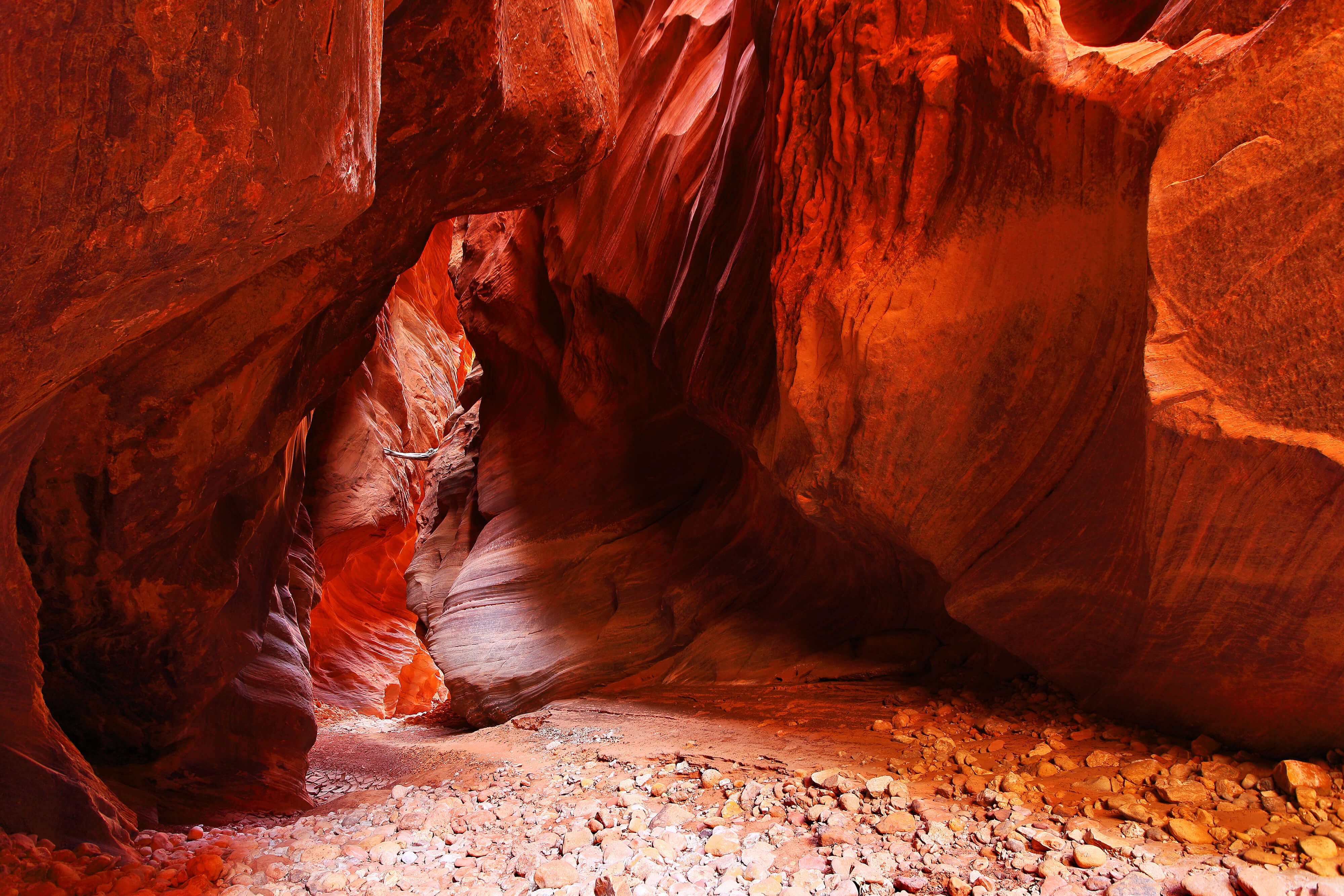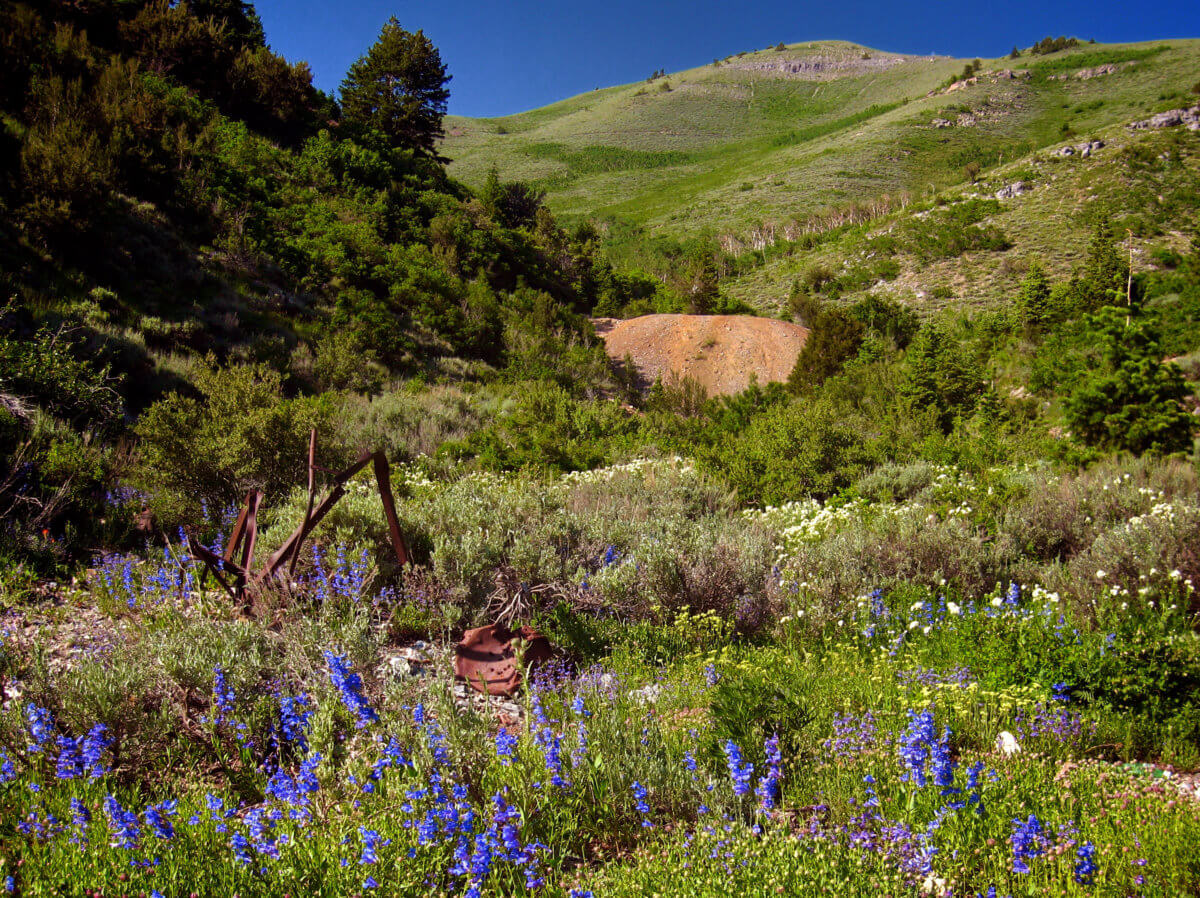The Ice Age in Utah

Utah has not always been home to humankind. Before Utah was a state, before Europeans claimed the New World as theirs, before Lake Bonneville dwindled to remnants that we call the Great Salt Lake and Utah Lake, before the first Native Americans trekked to the New Continent, the American West was home to a diverse and exotic suite of animals.
Early in the Tertiary Period, not long after dinosaurs became extinct, mammals began a long and colorful evolution in North and South America. By late Tertiary time, two million years ago, our continent was occupied by camels, mastodons, horses, ground sloths, armadillos, saber tooth cats, giant wolves, giant beavers, giant bears, and many other exotic animals. The landscape from a distance looked more like today’s Africa than modern North America.
By the late Tertiary, glacial conditions in high latitudes intensified. Enormous quantities of water were bound up by the glaciers, and sea levels fluctuated with each shortlived glacial episode.
About 1,600,000 years ago, the first mammoths emigrated to North America from Asia during one of the low stands of sea level. That event marks the arbitrarily defined beginning of the Pleistocene Epoch of the Quaternary Period. The Ice Age was in full swing.
Mammoths spread throughout North America, adjusting to the native fauna, which included mastodons, their distant cousins. Like most of the other Ice Age animals, mammoths became isolated from their Eurasian ancestors in the Pleistocene.

A representation of Utah’s geography and Lake Bonneville during the Ice Age
Glaciation
Mammoths evolved for more than 1.5 million years in North America, adjusting to the fluctuating conditions of the Ice Age. With each cycle of glaciation and deglaciation, habitats were disrupted first, then stabilized, and then disrupted again with renewed glaciation.
Each time the glaciers formed, they coalesced into enormous sheets of ice over central and eastern Canada, eventually pushing southward. These ice sheets, or continental glaciers, were as thick as two miles. They often moved so rapidly that they crushed standing forests.
At one site in Wisconsin, a low-elevation forest was crushed by the mountain of ice that overran the landscape; in a matter of only a few years (or perhaps, months) the elevation changed from only a few hundred feet above sea level (the elevation of the forest) to perhaps 10,000 feet at the top of the glacier, as high as the Wasatch Plateau today.
Effects in the West were similar, but more localized. Glaciers waxed and waned in the mountain valleys, and fresh-water lakes filled the adjoining basins. In Utah, Big and Little Cottonwood Canyons, and many others, were gouged by glaciers hundreds of feet thick.
Glacial Lake Bonneville received the waters from spring and summer melt from the glaciers. Lake Bonneville grew, submerging vast tracts of low-elevation habitat. The vast intermountain basin we know today as the Great Basin was filled with fresh water. Terrestrial vertebrates were restricted to the shorelines of that glacial lake.
Habitats suitable for mammoths, mastodons, camels, horses, and muskoxen were restricted to the margins of lakes and the periphery of mountain glaciers. Large ungulates that for generations had migrated with the seasons had to move along shorelines rather than across valleys.
Ice Age Map
Climatic Fluctuation
Climatic effects during the Ice Age became drastic by the end of the Pleistocene. Populations of animals and plants that lived in Canada were pushed southward thousands of miles. Intermountain valleys in the West became home to forests, rather than the deserts we have today. Between glacial episodes, forests retreated to higher elevations and desert vegetation returned, only to be replaced with the next glacial episode.
Especially during the latter part of the Ice Age, animals and plants that lived in northern Utah left a wonderful legacy of their history. With each fluctuation of the climate, some old species returned, and some new ones appeared. Some of those animals have been preserved as fossils in sediments deposited during their existence.
This paleontological record allows us to chart a faunal history for northern Utah during the Ice Age that reflects climatic fluctuations brought about by the waxing and waning of glaciers, the rise and fall of glacial lakes such as Lake Bonneville, and modifications of vegetation zones. This fossil record, especially of the past 30,000 years of the Ice Age in Utah, expands every year with new and important discoveries.
Pleistocene Extinction
Gradually through the Ice Age, the fauna became familiar. There was a net loss of diversity: extinction took a heavy toll, ultimately removing mastodons, mammoths, camels, horses, ground sloths, giant bears, giant wolves, giant beavers, muskoxen, giant bison, and many other species.
The history of emigrations, population expansions and adjustments, and ultimate extinction or survival of these Pleistocene animals are only broadly understood. We debate ultimate causes, seeking to understand broad patterns of evolutionary history of the Ice Age biota. We seek to more clearly understand the origins of the modern biota from this Pleistocene heritage, and the patterns of survival that this rich paleontological history can provide.
Theories that seek to explain the Pleistocene extinction fall into two categories. According to “Pleistocene Overkill Theory,” the large animals in the Americas were killed off in a veritable blitzkrieg by early humans who entered North America from Asia. The “Climate Theory” holds that rapidly fluctuating climatic changes proved too demanding to populations of large ungulates, which became extinct for their failure to adjust; predators such as the shortface bear and saber tooth cats lost their natural prey and met extinction as well.
These theories provide working hypotheses that can be tested by modern application of stratigraphy and biochronology from radiometric dates. Each new fossil site holds potential clues that add to the knowledge of these original Utah wildlife species.
-Thanks to David D. Gillette at UGS for providing this information
 Previous Post
Previous Post


